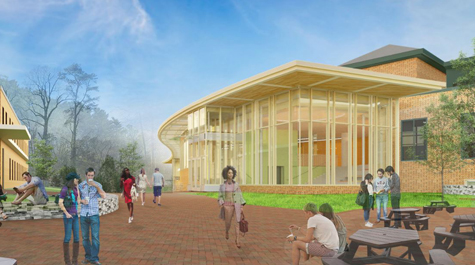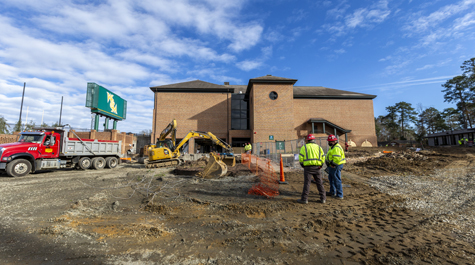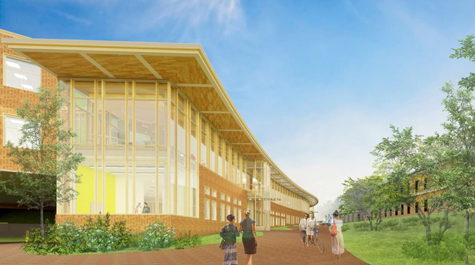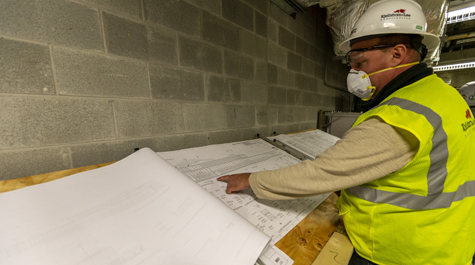Work underway to expand Sadler Center
As the expression goes, pardon our mess during renovation.
William & Mary's Sadler Center West expansion project started in late November and was well underway when students returned to campus the final week of January. When work is completed — the target date is summer of 2022 — 53,000 square feet will be added to make Sadler the undisputed centerpiece of campus activity.
“Our goal is to create a hub of student life right in the heart of campus — to meet our students where they spend so much of their out-of-class time,” Vice President for Student Affairs Ginger Ambler said. “If you think about the construction of the Cohen Career Center next to the Sadler Center, and in 2018 the opening of the McLeod Tyler Wellness Center also in that same part of campus, we have been steadily creating that vibrant center for W&M student life.
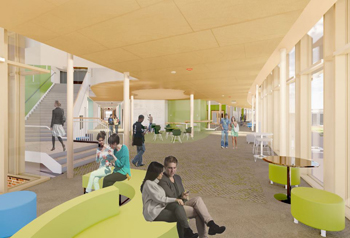 “With this beautiful addition to the Sadler Center, students will easily find services they need. They will encounter one another in both planned and unplanned ways, and they will enjoy engaging spaces for meetings, social events, speakers, performances and other community gatherings.”
“With this beautiful addition to the Sadler Center, students will easily find services they need. They will encounter one another in both planned and unplanned ways, and they will enjoy engaging spaces for meetings, social events, speakers, performances and other community gatherings.”
Presently, student organizations are scattered across campus. Student Leadership Development, Residence Life, the Dean of Students office, the Center for Student Diversity and the Flat Hat are among those at Campus Center on Jamestown Road.
Community Engagement is in Blow Hall, and Student Transitions and Engagement Programs (formerly First Year Experience) has an office at the Lambert House on Jamestown.
“They will be able to socialize and have formal gatherings and informal gatherings in a place that feels like home in the heart of campus,” Ambler said. “The Sadler Center will have new, inviting spaces. We want to create a place that helps students find and engage in activities that enrich their W&M experience.”
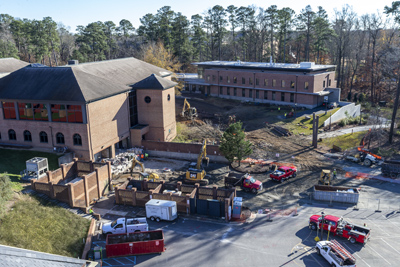 Plans call for a three-story addition on the west side of the Sadler Center in addition to renovations to the Student Health Center. Projected to cost $38 million, the project was approved by the Board of Visitors as part of W&M’s 2015 Master Plan.
Plans call for a three-story addition on the west side of the Sadler Center in addition to renovations to the Student Health Center. Projected to cost $38 million, the project was approved by the Board of Visitors as part of W&M’s 2015 Master Plan.
Director of Student Unions & Engagement Eric Margiotta said the goal is “to add as much life as we can” with the project.
“We’re pushing hard to make things both unique and relatable to the campus,” he said. “There are some student unions in the country where you know where you are, there is an immediate sense of place, of the campus. In others, you would have no idea what campus you’re on.
“In a student building setting, we can be a little bolder. It’s not going to be super reserved and dull. We’re looking for vibrancy and life and ways to represent the university so you’ll know where you are.”
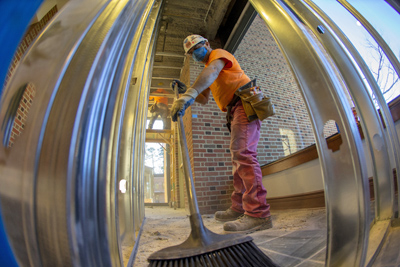 Andrew D. Stelljes, assistant vice president of student affairs, said the facility will have vibrant color patterns and an open design.
Andrew D. Stelljes, assistant vice president of student affairs, said the facility will have vibrant color patterns and an open design.
“The art will be selected so that we see people, groups, and cultures in new and different ways, drawing our attention to values of belonging and inclusion,” he said. “The expanded student union will inspire creativity and discovery, leadership and service, critical thinking, and open-mindedness. It will be a place for our student organizations to practice courageous leadership.”
In the meantime, there will be construction work, noise, and an occasional mess. There is fencing around the project area.
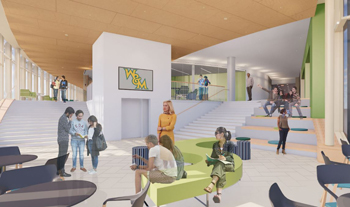
“The construction site, mostly situated between Sadler and IWC, will be very active for the next year and a half,” Project Manager Amber Hall said. “Temporary measures have been put in place so Sadler Center can continue functioning at full speed for the duration of construction.”
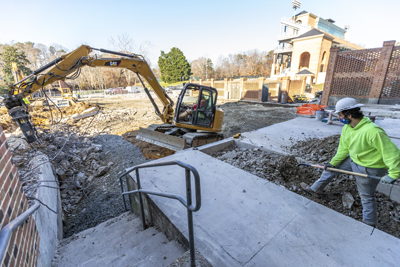 Ambler said every effort is being made to keep disruption to a minimum.
Ambler said every effort is being made to keep disruption to a minimum.
“The team managing the project has a thorough plan for phasing the work so it will be least disruptive to people using the Sadler Center and adjacent facilities,” she said. “We will, for example, continue to have an active dining hall there.
“Interestingly, because of the pandemic, the Sadler Center isn’t as busy as it would have been in a normal academic year. We are not hosting the typical array of evening events and programs, though we are using those larger spaces in Sadler as classrooms during the day. The winter break was an important time for making progress on the project because the campus was even less busy then.” Skip to main content
Skip to main content

